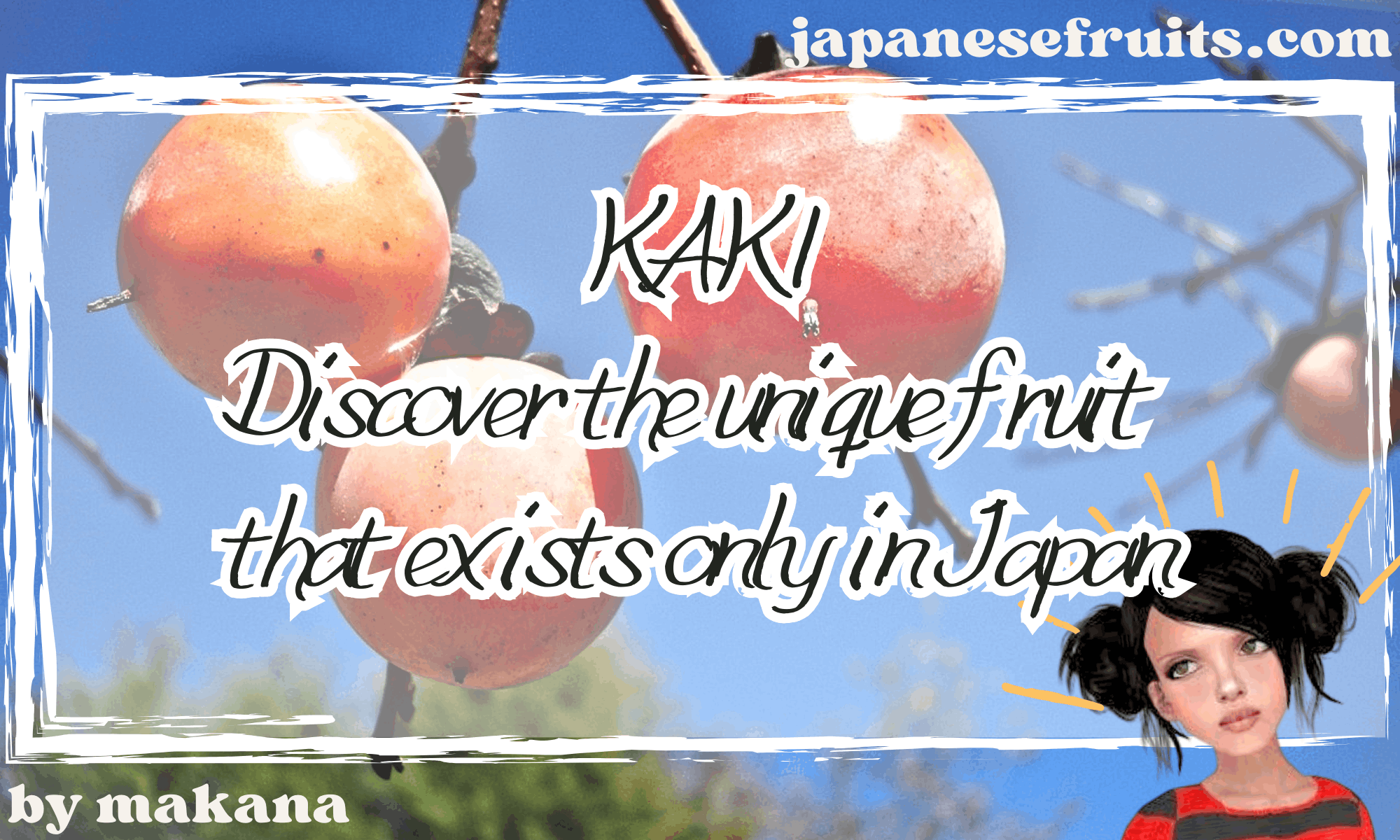Hello everyone, I’m Makana.
As autumn deepens each year, I eagerly anticipate persimmon season. What started as a hobby of making dried persimmons (hoshigaki) has now become one of my cherished autumn traditions. Getting persimmons at special prices from friends and local grocers, then carefully tying their stems and hanging them under the eaves – these moments mark the arrival of fall for me.
What many Japanese people might take for granted is that our sweet persimmons (amagaki) are actually quite extraordinary. While persimmons grow worldwide, sweet persimmons that naturally lack astringency exist only in Japan. You won’t find persimmons with such natural sweetness anywhere else in the world.
This uniqueness is reflected in the persimmon’s scientific name, “Diospyros kaki,” which beautifully translates to “food of the gods.” Perhaps these sweet persimmons, unique to Japan, are truly a divine gift.
As another dried persimmon season approaches, I’m reminded of the exceptional nature of Japanese fruit. Today, I’d like to share with you the charm of sweet persimmons, one of Japan’s treasures that we can proudly present to the world.
Japan’s Sweet Persimmons: Unique in the World
While persimmons are cultivated globally, with China producing 3.03 million tons, Spain 400,000 tons, Japan 230,000 tons, Brazil 180,000 tons, and Azerbaijan 150,000 tons as of 2017, sweet persimmons remain unique to Japan.
The oldest recorded sweet persimmon variety, Zenjimaru, was discovered in 1214 in Kawasaki City, Kanagawa Prefecture. Though small with large seeds, this variety is known for its intense sweetness and holds the distinction of being the world’s oldest sweet persimmon variety.
Japanese farmers continued developing new varieties across the country. The Fuyu persimmon, created in Gifu Prefecture during the Meiji era, got its name from the wish that it would bring prosperity (“fuyu”) to farmers. It has spread to persimmon-growing regions throughout Japan except for Tohoku and Hokkaido, becoming Japan’s representative sweet persimmon variety.
The Jiro persimmon from Shizuoka Prefecture has an fascinating origin story. In 1844, Jiroukichi Matsumoto found a persimmon branch floating in a river and planted it. Although the original tree was destroyed in a fire, a new shoot from its roots became the source of today’s Jiro persimmons.
The difference between sweet and astringent persimmons lies in their tannin properties. While both contain tannins, sweet persimmons have the unique ability to naturally convert these tannins into an insoluble form – a characteristic found nowhere else in the world.
Persimmons in Japanese Culture
Have you heard the saying “When persimmons turn red, doctors turn pale”? This clever proverb suggests that persimmons are so nutritious that doctors worry about losing patients during persimmon season. Sweet persimmons, which can be eaten immediately after harvest, have long been valued as an easily accessible source of fresh nutrition.
Persimmons also hold a special place in Japanese literature. The famous haiku by Masaoka Shiki, “Eating a persimmon / The bell at Horyuji / Rings” captures the essence of autumn in Japan, combining the simple act of eating a persimmon with the resonant temple bells.
Persimmons began their journey worldwide in the mid-19th century when a botanist aboard Commodore Perry’s fleet brought them to America. They later spread throughout the Mediterranean region, particularly in France, Spain, and Italy, becoming the ancestor of today’s global persimmon varieties.
Japanese dried persimmons have also gained international recognition. Gifu Prefecture’s Dojo Hachiya dried persimmons won silver at the 1900 Paris World’s Fair and gold at the 1904 St. Louis World’s Fair, establishing their value as a traditional Japanese preserved food.
How to Enjoy Sweet Persimmons
Japan boasts over 1,000 persimmon varieties, with several sweet varieties standing out:
The Fuyu persimmon, Japan’s most popular variety, is large and round with smooth, melting flesh. Known for its full shape, glossy skin, and delicate, juicy texture, it’s considered the highest grade of sweet persimmons with its rich sweetness.
The Jiro persimmon, distinguished by its square shape, has firmer flesh with a pleasant bite. Though less sweet than Fuyu, its clean aftertaste and excellent keeping quality make it a favorite despite lower production volumes.
When selecting sweet persimmons, look for deep orange coloring and firm stems. Avoid fruits with gaps around the stem, as these can allow water and insects to enter.
Nutritionally, persimmons are remarkable fruits. One persimmon provides nearly a day’s worth of vitamin C, along with glucose, fructose, vitamins B1 and B2, carotene, and minerals. They’re beneficial for various health conditions including water retention, hangovers, and high blood pressure, while also promoting healthy skin.
Conclusion: The Pride of Japanese Persimmons
Sweet persimmons represent a unique Japanese treasure. Their existence only in Japan, among all persimmon-growing nations, stands as a point of national pride.
Nurtured through history and refined through careful breeding, Japanese sweet persimmons truly deserve their designation as “food of the gods” with their gentle sweetness and rich nutritional value.
This year again, I look forward to making dried persimmons from fruits shared by friends and local shops. Though time-consuming, the concentrated sweetness of dried persimmons is one of winter’s pleasures.
Next time you spot persimmons at your supermarket or local market, I encourage you to try them. Share the magic of Japan’s sweet persimmons with your family and friends.
The sweet persimmon season is autumn’s gift from Japan. I hope more people can discover the charm of this extraordinary fruit.

Leave a Reply